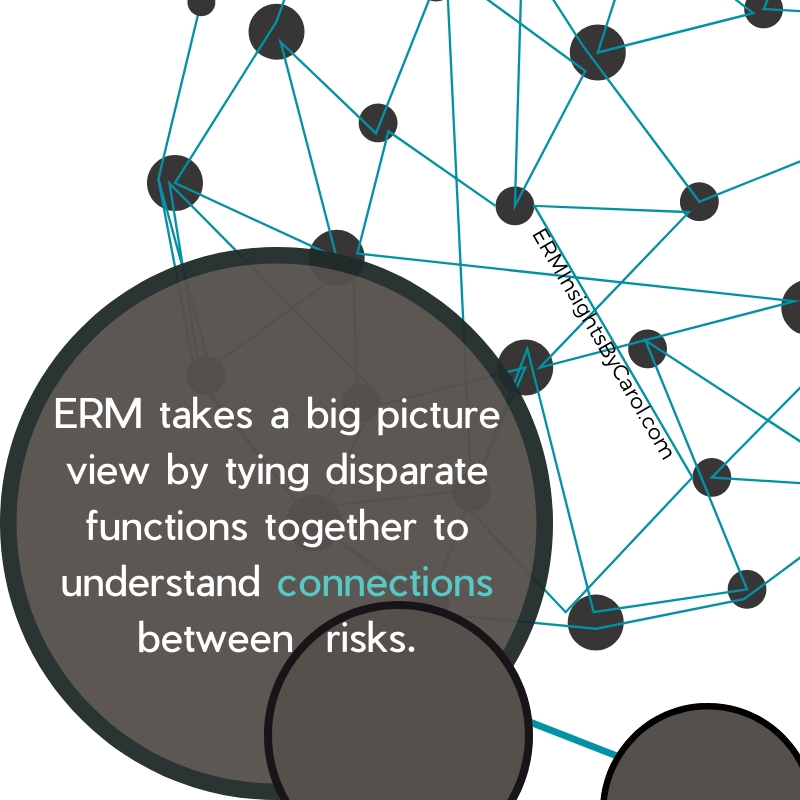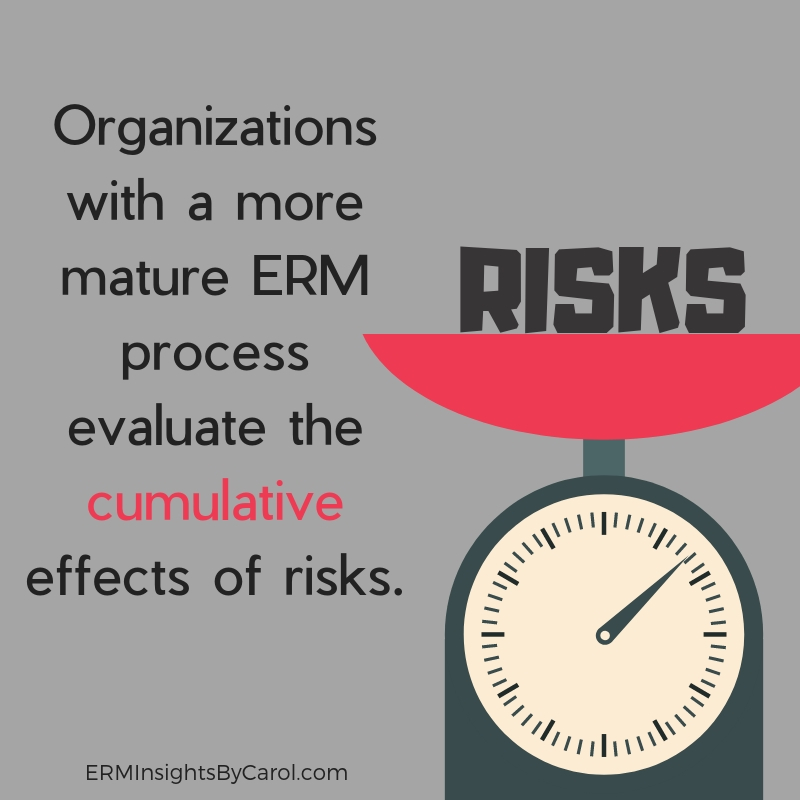When I first began my blog, the first big topic I explored was the difference between traditional and enterprise risk management. In the traditional vs. ERM article (one of the most popular articles of all time), I outlined eight ways that separate each of these concepts.
Today, I want to dive a bit deeper on the actual management of risks and how they differ in these two environments.
In the article, I explained how traditional risk management looks at risks one-by-one and handles them on an as-needed basis. This process occurs at the department-level and rarely, if ever, includes coordination with other parts of the company.
While many organizations simply focus on risks one-by-one, handling risk management this way can cause much bigger problems down the road. The traditional approach doesn’t show the cumulative effects varying risks can have on the organization nor does it look at how risks relate to one another.
Instead of looking at risks one-by-one as is done in a traditional siloed environment, ERM combines the various departments’ risk management activities together to look at the big picture of risks the organization faces. Risks are analyzed to determine any connections, trends, or concentrations.
Some common questions to ask are:
- Why does the risk exist?
- What type of events could trigger the risk? Why would the event occur?
- Can the risk be linked to another risk we already know about?
- Does this risk exist because of a mitigation activity of another risk?
Discovering connections between risks isn’t an open and shut case…doing so involves more than just comparing descriptions.
The first place to look for connections is to analyze the impacts of risks to find commonality. If two or more risks will have the same impact should they occur, actions can be taken to either reduce or eliminate that impact.
Another place to discover connections is to determine the root cause of risks and then see if there is any overlap in the root causes. If the root cause is A, B, and C for risk #1, B and D for risk #2, and A and E for risk #3, we can see that addressing root cause A will affect risks #1 and #3 while addressing root case B will affect risks #1 and #2. Comparing root causes of risks can help management understand the most beneficial places to invest resources.
Earlier, I explained how traditional risk management doesn’t consider the cumulative effects of risks. This can be defined as multiple instances of the risk occurring or the possibility of multiple risks happening at once.
Determining cumulative effects in a precise way requires the use of modeling and data. To be transparent, I have little experience in modeling since it involves statistics to determine confidence intervals of certain events (i.e. 90% chance of this happening but a 10% chance of a different impact). Models like this are developed by actuaries like Milliman or a similar company.
Many organizations will use 1-5 scales for assessments based on the knowledge and expertise of those closest to the risk. Basic risk assessments will only consider one instance of the risk occurring. Also, the risk analysis phase typically looks at the risk by itself without looking at the impacts of risks triggering another risk.
What I’m trying to say here is that understanding the true cumulative effect of a risk can get really complicated, especially if you don’t have any actuary expertise in your organization.
Generally speaking, it can take several years before an organization has a robust enough ERM process to determine cumulative effects. So, if you aren’t there yet, don’t feel like your organization’s ERM is woefully inadequate. If what you are doing is working for you and the executives, great!
My experience has shown that it’s common for executives to want to see results like this soon after launching an ERM program. However, it’s imperative they understand that it’s usually not possible in the near-term, which is why managing expectations of your ERM program with executives is so important. Take this opportunity to check in with your executives and board about their expectations. Do they want the more in-depth insights into risk? Do you need to start moving ERM in a more complex direction?
Although understanding cumulative effects and discovering connections between risks are advanced concepts, being able to do so will ensure your organization reaps the most benefits from its ERM process.
Is your organization looking at the big picture of risks or managing them one-by-one? Has your ERM process advanced enough to consider the cumulative effect of risks?
I want to hear from you regarding this important distinction between traditional vs. ERM. Please leave a comment or join the conversation on LinkedIn to share your thoughts.
And if your organization is trying to better understand the connections between risks or is just embarking on the ERM journey, contact me to discuss your organization’s needs and goals today.










